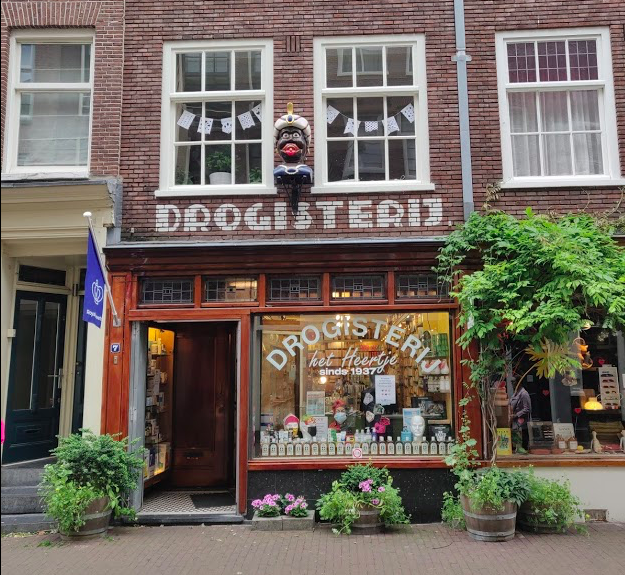A drugstore in Amsterdam has decided to remove a statue of the head of a Black man from over its front door, following a Twitter storm.
The statue in question was a gaper, which usually depicts a Black or Asian man, often with a turban. Often, they have an open mouth with their tongue sticking out, and were used in the Netherlands from the 17th century onwards by drugstores to promote the quality of the shop. The use of Black or Asian men as statues aimed to advertise that the medicines from the shop were coming from far away: many 17th century medicines were made from spices traded from the Middle and Far East.
A few days ago, Volkskrant columnist Sylvia Witteman tweeted about the statue to her 170,000 followers: a tweet, she now says, that was meant as a joke. However, the humour was lost on some people. “My snide comment was taken seriously by a bunch of idiots. The residents are harassed and the gaper is taken away!”
Verbazend dat dit hier nog hangt, midden in Amsterdam. pic.twitter.com/hlIlvxBKsY
— Sylvia Witteman (@sylviawitteman) July 5, 2020
However, the management of the drugstore does not seem fully sure if it has made the right choice. “My employees have no longer felt safe in the store in recent days,” said Harry Piet, the drugstore manager, to NOS. “There were no threats, but they didn’t feel good about people walking by or taking pictures.” Piet insisted that the statue had nothing to do with racism or slavery, and is looking into ways of getting the statue back up, but perhaps in a new location in the store.
Across Europe and the US, there have been lots of conversations about controversial statues and how we can handle them. From removing them entirely (or dumping them in the harbour, as the people of Bristol did with the statue of slave trader Edward Colston) to moving them to a different context, such as a museum, how we are to deal with monuments that are not in line with our current moral standpoint is still a question that remains unresolved. Part of that is down to the variety of statues that are problematic: it might be more suitable for some types of statues to remain in public spaces, but with plaques attached giving further explanation.
How do you feel about these types of statues, and how should we deal with them? Let us know your thoughts in the comments below.
Feature Image: Abuzer van Leeuwen/Supplied

Commenting here as an American, I am a dual national, let me put it this way: if the statue was good enough to be up under the administration of Barack Obama it’s good enough to be up under the administration of Donald Trump. PERIOD
If the manager though that the caricature of a black person – replete with bulging eyes and bright red lips – “…the statue had nothing to do with racism or slavery”, then he should put it back until enough people inform, harass and mock him so that he learns colonial-era crap like this has **everything** to do with racism.
You’re not helping the overall view of Americans.
Because someone put up something offensive during the period of a certain president of another country, that doesn’t make it inoffensive.
Living with, and learning from, our history is only possible if we are tolerant of the cultural norms of our predecessors. A vocal minority proclaiming their offence in the hope of having something banned or hidden away is selfish and intolerant. History is for us all, thus removal of any object must be by democratic consent – and certainly not by a baying mob of twitterers with an itchy send finger.
“Living with, and learning from, our history is only possible if we are tolerant of the cultural norms of our predecessors” – I appreciate context is everything, but at the same time the demand for these cultural changes have been coming for decades…whose predecessors do we include in our assessment? Are you suggesting the status quo has a greater right than the historically oppressed? Also, this is on a shop – not in a museum… perhaps this head belongs in one.